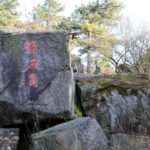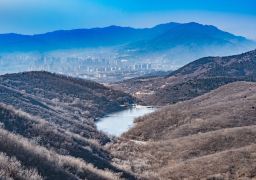The Jiyun Taoist Academy was first built in 889 (during the Longji period of the Tang Dynasty). In the sixth year of Xiangfu in the Song Dynasty, it was bestowed the name ‘Jinghui Academy’. During the Xuanhe period of the Song Dynasty, it was renamed ‘Jiyun Taoist Temple’. In the Hongwu period of the Ming Dynasty, it was incorporated into the Baihe Temple. In 1417 (the fifteenth year of Yongle in the Ming Dynasty), the ‘Jinghui Temple’ was rebuilt.
According to ‘Records of Baishi Mountain’: ‘In its prosperous time, there were high ridges and huge thresholds, resplendent and magnificent. There were dozens of resident monks. The sound of bells and Buddhist chants continued day and night without ceasing, and it was known as a jungle.’ In August 1920 and September 1922 (the 11th year), it was successively hit by typhoons and collapsed. In 1931, Ye Mingda, a traveling Taoist priest, and Xinbao rebuilt it through fundraising, which remains to this day. The Taoist academy is located at the southern foot of Hengshan Mountain and north of Dongjia Village, covering an area of 2064 square meters and divided into two courtyards. In the back hall, there is a pair of large stone pillars. There are couplets written by Zhao Shungeng, a famous Confucian scholar in the township, engraved on them: ‘Confucianism, Buddhism, and Taoism are different currents but share the same purpose; the east and west sacrifices are divided into two branches but share the same origin. ‘ There is a well in the patio, which is 8.2 meters deep. In front of the Taoist temple, there is a pair of stone pillars and two camphor trees of different sizes each. The stem diameters of the large camphor trees are 3.30 meters and 3.10 meters respectively. The abbot, Master Feng Chengfang, also serves as the honorary president of the Yueqing Taoist Association.Jiyun Taoist Temple
The Jiyun Taoist Academy was first built in 889 (during the Longji period of the Tang Dynasty). In t[...]









